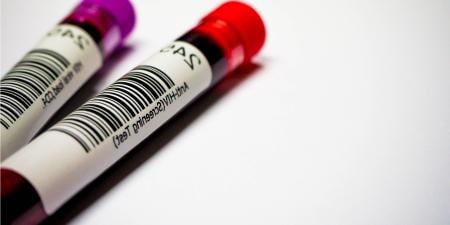Case
Mr. Muzzio has a history of co-existing schizophrenia and heroin use. Prior to his visit at the HIV clinic, Dr. Donaldson reviewed Mr. Muzzio’s discharge summary from the hospital, which described his last admission to the psychiatric inpatient ward. On admission, Mr. Muzzio had been profoundly delusional, thinking that music artists were trying to send him messages through the songs he heard on the radio. At one point during the admission, a physician suggested that Mr. Muzzio’s mental status change was due to progression of HIV rather than to his underlying psychiatric diagnosis. A CD4 count and viral load were ordered, which came back low and high, respectively. Dr. Donaldson went to see his patient, and, after the usual questions about his current status and psychiatric follow-up, he inquired about Mr. Muzzio’s use of antiretrovirals.
“So what medicines are you currently taking for your HIV, Mr. Muzzio?”
“I’m on Combivir and Reyataz, doc, just like you gave me last time I was here,” said Mr Muzzio.
“And do you take your medicines regularly?”
“Well you see, I haven’t really been taking my pills at home so much,” said Mr. Muzzio. “I’m in the hospital a lot, and well, I miss a lot of my medicines when I’m sick.”
“What do you mean by that Mr. Muzzio?” asked Dr. Donaldson.
“So it goes down like this, I’m doing well for a while, not using and taking my medicines, but then I screw up and I start using again, and then I hear the voices and they tell me not to take my medicines, that they’re poisoned. So I stop all my pills. It’s not like I don’t want to take my medicines. I do. You know me, my medicine is real important to me.”
“So what happened this time?” asked Dr. Donaldson. “When they checked your labs in the hospital, they were really off from where they had been.”
“I know, Dr. D. That was bad. It’s been a long time since I was here and I hadn’t been taking my meds, I messed up. But I promise that was the last time. See this all started when my buddy got shot and I found out my girlfriend was cheating, and all this bad stuff kept happening, and it got me down and made me start using again. They got me in rehab now, and you know when I’m clean I show up to all my appointments.”
Dr. Donaldson had been down this road before with Mr. Muzzio. His patient meant well and genuinely tried to comply when he was under psychiatric treatment. Dr. Donaldson also knew that Mr. Muzzio was a byproduct of a system that kept letting him slip through the cracks. He had tried to get Mr. Muzzio into a methadone maintenance program for years, but his patient kept being rejected due to a previous failure in a different program. He had referred him to city hospital’s special program for the treatment of comorbid psychiatric illness and drug abuse, but the program had been eliminated due to hospital budget cuts. Mr. Muzzio had also required regimen changes due to resistance, probably secondary to his noncompliance. Dr. Donaldson was frustrated with the whole situation. He wanted to do what was best for his patient, but he also felt he could not keep treating him in the face of blatant noncompliance.
Commentary
Dr. Donaldson is frustrated because he wants to do the best for his patient but does not know what “best” means in this situation. Is it best to give Mr. Muzzio the HIV therapy he wants? Is it ethical to provide a treatment, knowing from past experiences and the awareness of the patient’s comorbidities that adherence to the treatment is difficult and that he might fail? In other medical conditions such as diabetes, there is less at stake because diabetes does not evolve with drug pressure the way that HIV can. In the former case, nonadherence means a lack of health benefit. But nonadherence to HIV treatment raises the serious possibility that the patient’s HIV will develop resistance to the therapy.
Mr. Muzzio’s pattern of developing resistance poses two problems. First, it limits his future treatment options and may mean that the only medications that work for him require more pills, taken more frequently, with more side effects. Any one of those outcomes would most likely result in further nonadherence. Second, if Mr. Muzzio continues to use heroin and shares his injection equipment with others, he could transmit the resistant virus to others. Dr. Donaldson is right to be frustrated, inasmuch as Mr. Muzzio’s “triple diagnosis” of HIV, schizophrenia, and opioid dependence represents a complex interplay of chronic conditions that are all difficult to treat on their own and even more challenging when intermingled.
If the patient wants therapy, and therapy is medically indicated given the stage of the disease, then why is there a question of withholding therapy? After all, Dr. Donaldson has a positive duty to do good. But the action that appears, on the face of it, to do good, i.e., prescribing therapy, could—in the event of Mr. Muzzio’s nonadherence and development of resistance—result in a greater harm. The most frustrating point is that the “goodness” or “correctness” of the present decision relies upon the correct prediction of the future outcome. If we knew that Mr. Muzzio would be adherent, we would be wrong to refuse therapy. If we knew that Mr. Muzzio would be nonadherent, develop resistance, and infect someone with a resistant virus, then we would be wrong to prescribe. This utilitarian view may not be endorsed by all physicians, but it is certainly the way many physicians contemplate how to act in these situations.
Knowing that the patient needs the HIV therapy and realizing what is standing in the way of adherence to that therapy, Dr. Donaldson must resolve the problem. Mr. Muzzio is currently unable to fix his situation alone. He is a victim both of his disease and of a dysfunctional system.
Dr. Donaldson’s job is tough because ethically he cannot allow Mr. Muzzio to go out into the world with HIV/AIDS without treatment. Denying HIV care is effectively “randomizing” Mr. Muzzio to the “placebo” arm of a clinical trial without Mr. Muzzio’s consent and with a known outcome of increased morbidity and mortality. The patient needs treatment, and Dr. Donaldson must help him find some way to be adequately adherent to the regimen of choice. Dr. Donaldson has several treatment decisions to make related to his patient’s three diagnoses, and all of them will stretch him ethically and professionally. First, let us examine the decisions related to addiction.
Mr. Muzzio has been rejected by the methadone program for a prior “failure” in another program. How can this be, given that HIV-infected heroin users should actually have a priority in admission to methadone maintenance? If a methadone program is truly refusing to admit Mr. Muzzio because of a prior failure, that program must be re-educated on the criteria for admission to methadone. Prior failures in treatment are a strong indication of needed treatment and not a justification for refusing to treat. Dr. Donaldson needs to take 10 minutes to read the federal regulations regarding methadone maintenance or obtain a free copy of TIP 43 from the Substance Abuse & Mental Health Administration that explains the rules and regulations surrounding methadone [1]. Once Dr. Donaldson is informed, he can advocate for Mr. Muzzio effectively.
Another option that Dr. Donaldson could pursue is office-based treatment for opioid dependence using buprenorphine. Dr. Donaldson would have to undergo the appropriate 8-hour training and apply for the “X waiver” to be allowed to prescribe buprenorphine [2]. The major difference between buprenorphine and methadone that can affect Mr. Muzzio’s outcome is that methadone treatment has a better patient-retention record than buprenorphine. Given Mr. Muzzio’s underlying psychiatric condition, he might adhere to methodone treatment better than he would buprenorphine. Opioid agonist therapy is a powerful enhancer of adherence to treatment. Mr. Muzzio’s HIV and psychiatric medications, for example, could be provided with the methadone to improve adherence.
Second, Mr. Muzzio’s schizophrenia is contributing to his nonadherence. A working relationship between Dr. Donaldson and Mr. Muzzio’s treating psychiatrist is vital in coordinating care for this complex patient. A prior working relationship would go a long way toward facilitating improvements in adherence to all therapies. For example, Dr. Donaldson might prescribe a once-daily HIV regimen to improve adherence. If the psychiatrist is prescribing antipsychotics twice daily, but Mr. Muzzio is only taking half his doses because adherence support is only provided in the morning, then Mr. Muzzio will fail to take his psychiatric medications, which will result in overall treatment failure. Although Dr. Donaldson is not a psychiatrist, he has an ethical and professional obligation to coordinate care with the treating psychiatrist and to advocate for the patient. Long-acting, injectable antipsychotics—depot formulations—improve adherence and patient-related outcomes. In some communities an Assertive Community Treatment (ACT) team—effectively the SWAT team of the mental health world—is available to help patients with mental illness remain in treatment and take their medications [3].
Third, the HIV therapy Dr. Donaldson selects may be a barrier to adherence for Mr. Muzzio. The more pills and the more often one has to take something, the less likely one is to take everything all the time. Although the best HIV regimen may be four pills taken twice daily, for example, it may be better to prescribe an inferior regimen with a lower pill burden that the patient actually takes. This is balancing the duty to do good with the duty to minimize harm.
The key to adherence is to mold the HIV therapy to the patient’s lifestyle. Patients rarely make lifestyle changes (otherwise obesity would be eliminated from the world), so physicians must take the time to select the regimen that is best for the specific patient. This might mean compromising. If the patient refuses to take all the medications prescribed, should the physician refuse to prescribe anything? Of course not. The physician has the education to help the patient navigate all the choices. So, if the patient says, “Doc, I can’t take 10 pills,” the physician could respond with, “Well, you have to do it.” Or he could ask, “How many do you think you can take, and I’ll help you figure out the most important ones to take.” This second response is going to be more helpful to the patient. The patient’s answer may mean that Dr. Donaldson should prescribe an inferior regimen, one that the patient will take. There are HIV regimens that can withstand some nonadherence. It is evident in this case that HIV therapy is the least important medicine to any patient with Mr. Muzzio’s triple diagnosis; therefore, it is key that adherence to HIV therapy not be the anchor, but rather the HIV therapy be anchored to adherence to a regimen that is more important to the patient, such as his methadone.
Mr. Muzzio represents our failure to care for those with co-occurring disorders. Health care remains fractionated so that patients are asked to go one place for mental health care, another place for methadone, and yet a third place for HIV care. Patients like Mr. Muzzio need a truly integrated health clinic that can provide excellent care for mental health, addiction, and primary medical needs. Despite this logical conclusion, few such clinics exist. The ethical and professional physician seeking to meet the health care needs of patients with triple diagnoses must be prepared to tackle an immense problem. To refuse HIV treatment to the patient with mental illness and addiction until that patient is more stable is to misunderstand the problem. Such patients are continually struggling in one area or another, and the physician cannot be a passive observer waiting for the patient to do all the work. The active participation of the physician is necessary to improve the health outcomes of the patient. That is the ethical and professional course of action.
References
-
National Library of Medicine. Medication-assisted treatment for opioid addiction in opioid treatment programs: treatment improvement protocol (TIP) series 43. 2005. http://www.ncbi.nlm.nih.gov/books/bv.fcgi?rid=hstat5.chapter.82676. Accessed November 4, 2009.
-
US Department of Health and Human Services. Buprenorphine information center. http://buprenorphine.samhsa.gov. Accessed November 4, 2009.
-
Assertive Community Treatment Association. ACT model. 2009. http://www.actassociation.org/actModel. Accessed November 4, 2009.



